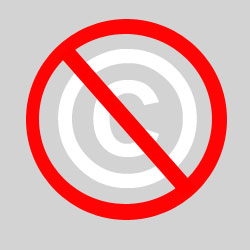
Copyright legislation may allow legalised theft of your images
UK Government lets down photographers.
In an unprecedented move a recent piece of UK legislation threatens photographers’ ownership of their own image. The Act potentially legalises online theft of images from amateur and professional alike. The legislation, which gained Royal Assent on the 25th of April 2013, will enable “orphan works” to be claimed on the basis of a copyright search. The person claiming the image will be able to re-licence it and claim full compensation for its use or resale if the copyright owner is not found.
Enterprise and Regulatory Reform Act
The new Act, which comes into force early 2014, is a “framework” Act addressing various legislative issues. The copyright section of the Act provides the power for the Government to introduce licensing of orphan works. The Act leaves detail to be inserted later through secondary legislation. Photographers are angered that this small section of the Act has allowed this rights-changing Act to be sneaked in under the radar.
The new licensing powers will be an important re-mapping of UK copyright law. The existing emphasis on assumed copyright ownership will be shifted toward the users of copyrighted works. This represents a change of copyright ownership from a “property right” under author control to a new condition where copyright becomes a licensing/sales tool with the owner having less control over end use.
The detail of this shift in emphasis is yet to be determined. The secondary legislation will define a “diligent search” which will be needed to find the originator/copyright owner. Also to be clarified is how orphan works will be re-registered to new owners; to what extent images will be under the control of new copyright owners and how the transfer of copyright might occur.
One concern is how the process of monitoring, transferring and re-licensing orphaned images would be administered and the sort of organisation to do the work. This also raises other spectres…
- Will works need to be registered to avoid them becoming orphaned?
- What sort of costs are going to be involved?
- Will artists and photographers working alone be able to register or bear the cost?
- To what extent will amateurs be protected?
There are many more questions that need answers too.
Photographers concerns…
Last year a backlash occurred against the photography social networking site Instagram. The site implemented terms and conditions potentially passing usage rights to Instagram. In the end Instagram backed down in the light of public and user anger. Many people have seen a similar rights grabbing move in this new UK Act.
The cost of litigation against copyright abusers is prohibitive. Small photography businesses and amateurs do not have resources to fight expensive court battles. So corporations rip people off and smaller organisations hide in the tide of online images.
Photographers are worried that tide will make this legislation a free-for-all thieves charter. The concern is that anyone could claim “diligence” when searching for a copyright holder by simply doing a Google search. No immediately obvious copyright owner being found would enable them to apply for a licence to take over the copyright.
This legislation seems likely to create a new market for third party organisations to move in and manipulate the ownership of creative works. That represents a money-making bonanza for big business interests in the creative industries. It will also be a total disaster for the little guy trying to protect their life’s work and income. Amateur interests in particular are likely to be badly hit. Great images will be ripped off because amateurs will not be in a position of knowledge or resources to protect themselves.
The social media area is a particular concern. There are very real fears that the volume of images online are so huge that carrying out effective copyright searches in social media websites will not identify most image creators. This will make copyright takeovers the norm, rather than the exception, a position reinforced by weak protection for image creators.
What every UK photographer can do
This new Act is the start of a long road where the nature of copyright in the UK could change for the worse. At the moment the new landscape is shrouded in fog. However, the fact that this Act has been implemented in this way, under the radar, does not suggest a great outcome.
On the HM Government website a petition has been posted that tackles the issue. Help us raise awareness by signing the petition and telling your friends about it too. The more photographers who understand the issues the more likely we will be to ensure we have a voice in future secondary legislation on this issue. Visit this UK Government petition at:
Stop Legalised Theft of Copyrighted Works ![]()
Please sign the petition and keep your eyes open for more information in the coming months.
Start Photokonnexion email subscription now!
Photokonnexion Photographic Glossary – Definitions and articles.
Definition: “Orphan Works”
Definition: Copyright; Copyrights; Copyrighting;
Further articles on the subject…
Will I get my images stolen online?
UK.Gov passes Instagram Act: All your pics belong to everyone now ![]()
Photographers’ anger at law change over ‘orphan works’ ![]()
Is The UK Government Trying To Kill Off Photographers ![]()
There is still life left in copyright: ![]() clearing up the misunderstanding surrounding the Enterprise and Regulatory Reform Act and ‘orphan works’
clearing up the misunderstanding surrounding the Enterprise and Regulatory Reform Act and ‘orphan works’
Stop Legalised Theft of Copyrighted Works ![]()
 Photokonnexion tips by email
Photokonnexion tips by emailIf you enjoyed this article please sign up for our
daily email service.
Find out more…


